Parts of Flowers
Botany - Flower Lesson Plans
This lesson plan from MatchCard Science teaches students the parts of flowers.
Free Download Below
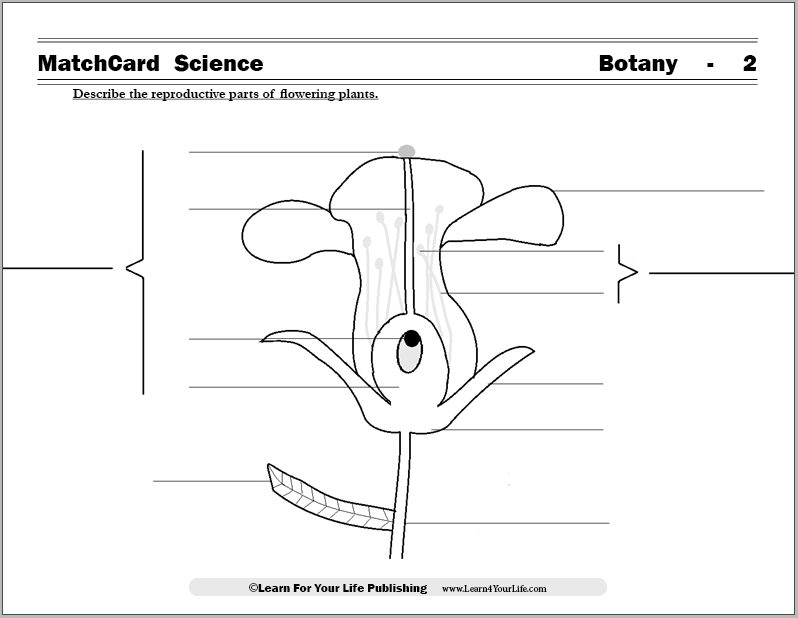
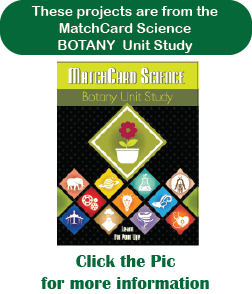
MatchCard Science Parts of Flowers Worksheet
Objective: Describe the reproductive parts of flowering plants.MatchCard: Download below.
MatchCard Information Pieces identify the parts of plants and their function.
Flower Lesson Plans
Compare Flowering Plants
Different flowers can be compared to find their similarities and differences. Ask the student(s) to show ten different types of flowers. Remind them that in addition to garden flowers there are also flowers on trees and bushes.The student can collect pictures or specimens of the different flowers.
Fold a paper in half. List the similarities on one side and the difference on the other.
Download and Use the Flower Parts MatchCard
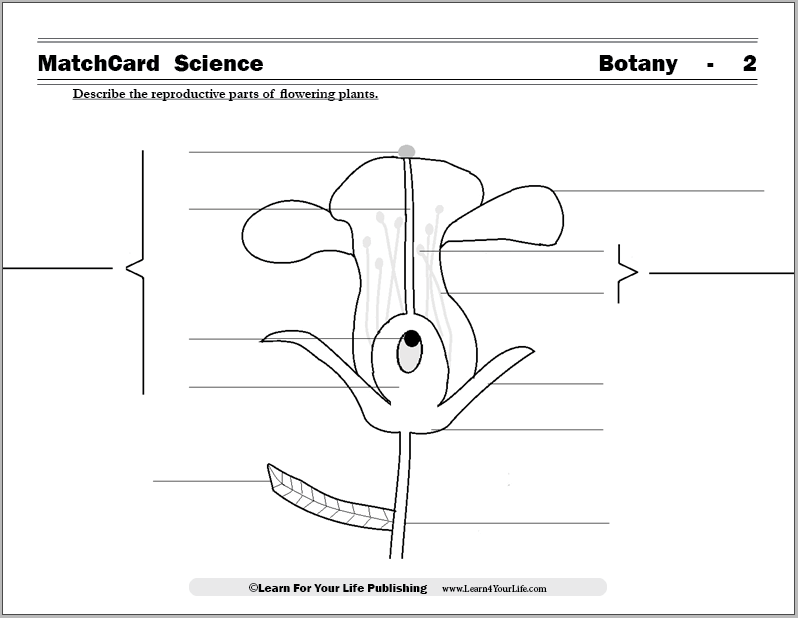

This is MatchCard #2 of the Botany Unit Study.
-
The 1st page is the workheet for the students. Students match the parts of the flowers to the diagram.
The 2nd page provides correct answers and projects for the instructor.
The 3rd page lists the information pieces for students to use on their MatchCard.
Learn the Parts of Flowers
Students will quickly notice that all flowers have certain external parts. Start by teaching the non-sexual parts of flowers. They are already familiar with these parts of flowers.
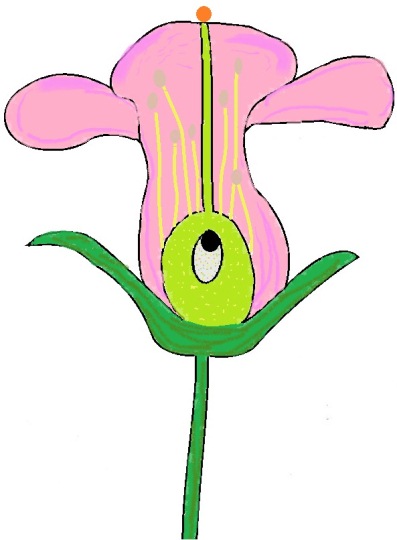
Non-Sexual Parts of Plants
Petals
Colorful, outside part of the flowerLeaves
Where photosynthesis takes place in the flowering plantStalk
Supports the flowerSepals
Protects the flower when it is a budReceptacle
Expanded tip of stalk that the flower grows out of; found at the bottom of the flowerPistil - Female Parts of Flowering Plants
After identifying the non-sexual flower parts, it is time to learn the female parts. These are found inside the petals. First look at the picture on the worksheet, as well as opening a flower and finding these parts.Stigma
Has a sticky surface to trap pollen, found sticking out of the petalsStyle
Holds up the stigma; like a stem inside the petalsOvule
Potential seedThe female gamete of the plant which may produce the new flower
Ovary
Holds the ovule or female gameteStamen - Male Parts of Flowering Plants
Explain that plants have male and female parts just as animals do. However, flowering plants are unique in that they have both male and female in one specimen.Anther
Makes the pollen, which is the male gameteFilament
Holds up the antherBotany Projects
Flower Poster
Take apart at least six different flowers and identify the parts. Use contact paper to make the poster.Coloring Book
Students can develop their own coloring pages by drawing different flowers. There is an unbelievable variety of structure, size and color even though the same flowers parts are present. Students may also choose to use any artistic medium to identify different flowers.
Flowers Inside Of Flowers
Some flowers, such as Blue Gem or Lantana, have flowers inside of flowers. That means that the petal of the flower is actually another flower with its own sepal.Queen Anne's Lace has been called a flower inside a flower inside a flower.
How many complex flowers can you find?
Plant Your Own
Plant your own flowers, inside or out. Some fast growing flowers include sunflowers, marigolds, zinnas and snapdragons. Young and adult alike take pleasure in seeing the small seeds turn into sprouts and then flowers. They can identify their organs as they become visible.You can also design an experiment where one type of flowering plant is exposed to different conditions (changes in soil, water, amount of sunlight or shade, inside or outside conditions.) Certain aspects of the plant can be measured in different conditions.
Experiment: Essential Oils from Flowering Plants
Essential oils are steam expressed from plants, and some aromatic oils are expressed from the petals of flowers.Do you think the essential oils will benefit or hurt a plant when added to their soil? You can conduct an experiment of a flowering plant like lavender or geranium that also has commonly available expressed essential oils.
You will want to have two or three plants that are not exposed to the essential oil as a control. Other plants can have the oil added to the water applied to their soil. Other plants might have the essential oil dissolved in water and spritzed (lightly sprayed) on their flowers.
Can you predict any differences that might be found in a plant that is exposed to the essential oils from other flowers of the same species, and those that are not exposed?
Flowers to Eat
Marigold Spinach Surprise Salad
- Marigold petals (wash thoroughly)
- Spinach (or other leafy green)
- Cherry tomatoes cut in half
- Thinly sliced cucumber
- Celery diced
Fruit Salad with Rose Petals
Another sweet surprise is rose petals in a fruit salad. Wash the leaves thoroughly to make sure any chemicals are washed off.- 1 cup of rose petals - separated & washed
- 1 cup of kiwi - sliced and quartered
- 1 cup of strawberries - sliced
- 1 cup of blueberries
Pollination of Flowers
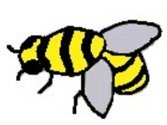

Want to know if a flower is pollinated by wind or insects? Check out Botany MatchCard #3 to find out.
MatchCard Science
How To Use MatchCards

Download the FREE MatchCard Science Instructor's Guide and see how MatchCards can make building their science knowledge base fun.
Botany Unit Study
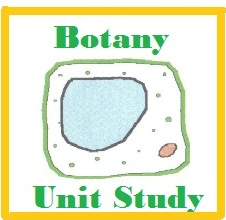
Check out our entire Botany Unit Study with 11 objectives.
12 Science Unit Studies

Chemistry is only one of twelve complete unit studies for kids in 3rd to 8th grade.
Comprehensive objectives, hands-on projects, suggested science fair experiments, and the fun game-like MatchCards keep them interested in learning science. See all twelve MatchCard Science Unit Studies.
About Our Site
Hands-On Learning













